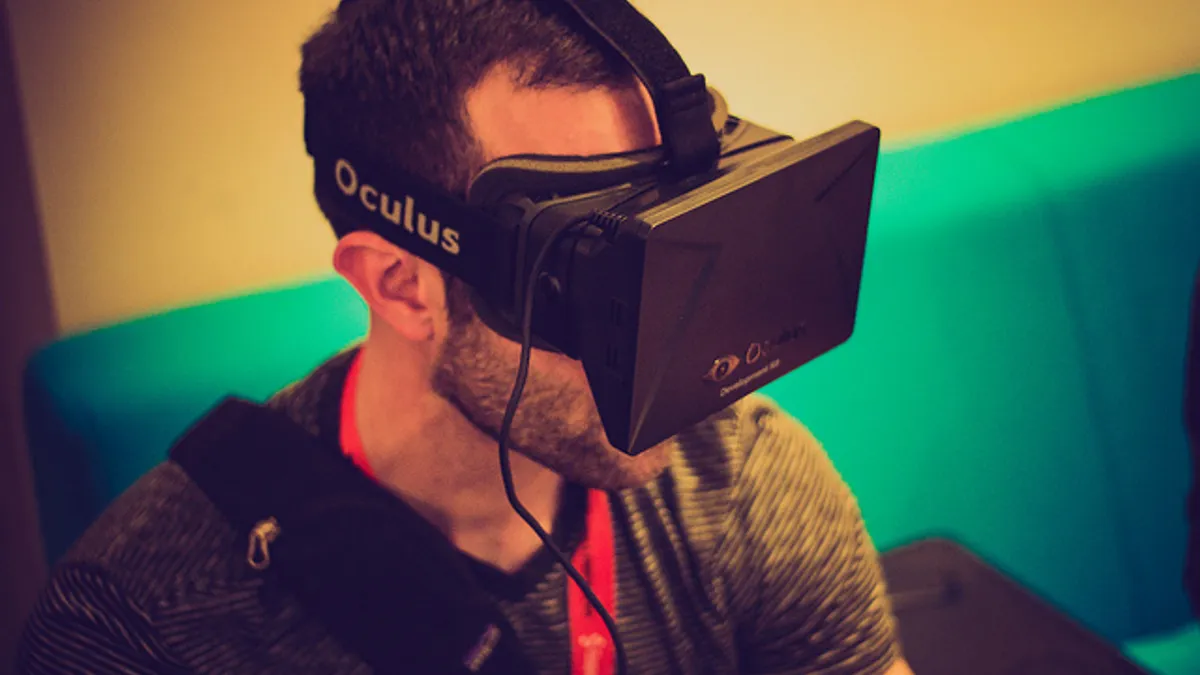From the make-up of student bodies to the way materials are delivered, higher ed is rapidly changing — and largely due to technology.
Unless you've been living under a rock, that statement isn't particularly shocking. Online learning has empowered non-traditional students, almost to the point that they're the new "traditional," and mobile devices have all but guaranteed the end of the textbook as we know it.
Technological disruption isn't so bad, though. For as much as it impacts the traditional business model for institutions and corporations, it also improves access and cost issues for students while opening new paths to revenue for those wise enough to see them. To get an idea of what the future of higher ed might look like in 2015 and beyond, Education Dive examined three emerging technologies that could facilitate some of the space's biggest shifts in years. And the future looks bright, indeed.
3. Online learning
While it's probably not the sexiest entry on this list, online learning has only just begun to impact higher ed. It's long history of doing so stretches back at least a decade, given that many higher ed institutions took a cue from University of Phoenix founder John G. Sperling's approach to reaching working adult students on their on time, at their convenience, when developing now-common models of continuing and online education. More recently, the MOOC movement was set to disrupt the space, and in a way, it has. It's hard to argue, for example, that concepts like Udacity's "nanodegrees" — low-cost skillset certifications for high-demand tech jobs — won't have an impact on how colleges and universities do business.
Furthermore, in a keynote about disruptive innovation at this year's Educause conference in Orlando, Harvard Business School Professor of Business Administration Clayton Christensen pushed the notion that modularity is key to higher ed's future — and that online learning will facilitate that. Citing a former student from Norway who taught at a university in that country, he detailed how the student at one point returned to the U.S. and continued teaching his course using an iPad attached to a robot he could control remotely. This let students see him and let him see their work. It's only a matter of time before students have the ability to learn anything they desire from anyone at any institution, and companies like EdCast may very well be in the process of making that even more of a reality.
2. Holograms
Once the stuff of science fiction and fantasy, the days of widespread holographic technology quickly approaching — even if the most common use of it thus far is to bring musicians like Michael Jackson and Tupac Shakur "back to life" for one more performance.
Since at least 2012, however, ed tech providers have been eyeing the tech as a distance learning tool. Potential uses laid out in a blog by Solutionz Conferencing include making it possible for experts to present "in-person," connecting remote classrooms, facilitating multi-classroom lectures, allowing online students to project a professor into their living rooms, and making it possible to "attend" historical events like the signing of the Declaration of Independence. EdTechReview had similar predictions in 2013.
While some of those ideas are still likely a ways off, that didn't stop McGraw-Hill from having fun with the idea this past April Fool's Day.
1. Virtual reality
Perhaps one of the most exciting tech developments, particularly when it comes to recruiting prospective students, virtual reality is poised to hit it big beyond just the realm of gaming. Facebook founder Mark Zuckerberg saw this when he dropped $2 billion on Oculus Rift in March, saying the technology "has the chance to create the most social platform ever, and change the way we work, play and communicate."
By summer, publications like EdTech magazine, TechCrunch, and Fortune were discussing how Oculus and Sony's Morpheus were being eyed by universities as a means of providing virtual campus tours. At least one company, YouVisit, is already utilizing special equipment to shoot photos and video for these tours, and France's Audencia Nantes School of Management sees the tech as a way to also show potential students some of Nantes' best-known landmarks. How long will it be before this tech becomes widespread among U.S. institutions looking to appeal to foreign students?
In addition to campus tours, virtual reality is also helping students at the University of Michigan dissect cadavers without actually needing the bodies.
Would you like to see more education news like this in your inbox on a daily basis? Subscribe to our Education Dive email newsletter! You may also want to read Education Dive's look at 7 higher ed stories to watch in 2015.














